I’ll never forget my first bite of a proper Rio street pastel – that sizzling crunch giving way to gooey cheese filling, while sweat trickled down my neck in the midday heat. The vendor laughed at my surprised expression and handed me a plastic cup of cold sugar cane juice without me even asking. “They go together,” he shrugged, as if I’d somehow missed life’s most obvious pairing.
That’s Rio’s food scene in a nutshell – unpretentious, flavor-packed, and served with a knowing smile. After countless food adventures across this magnificent city, I’ve learned that to understand Rio’s cuisine is to understand its soul.
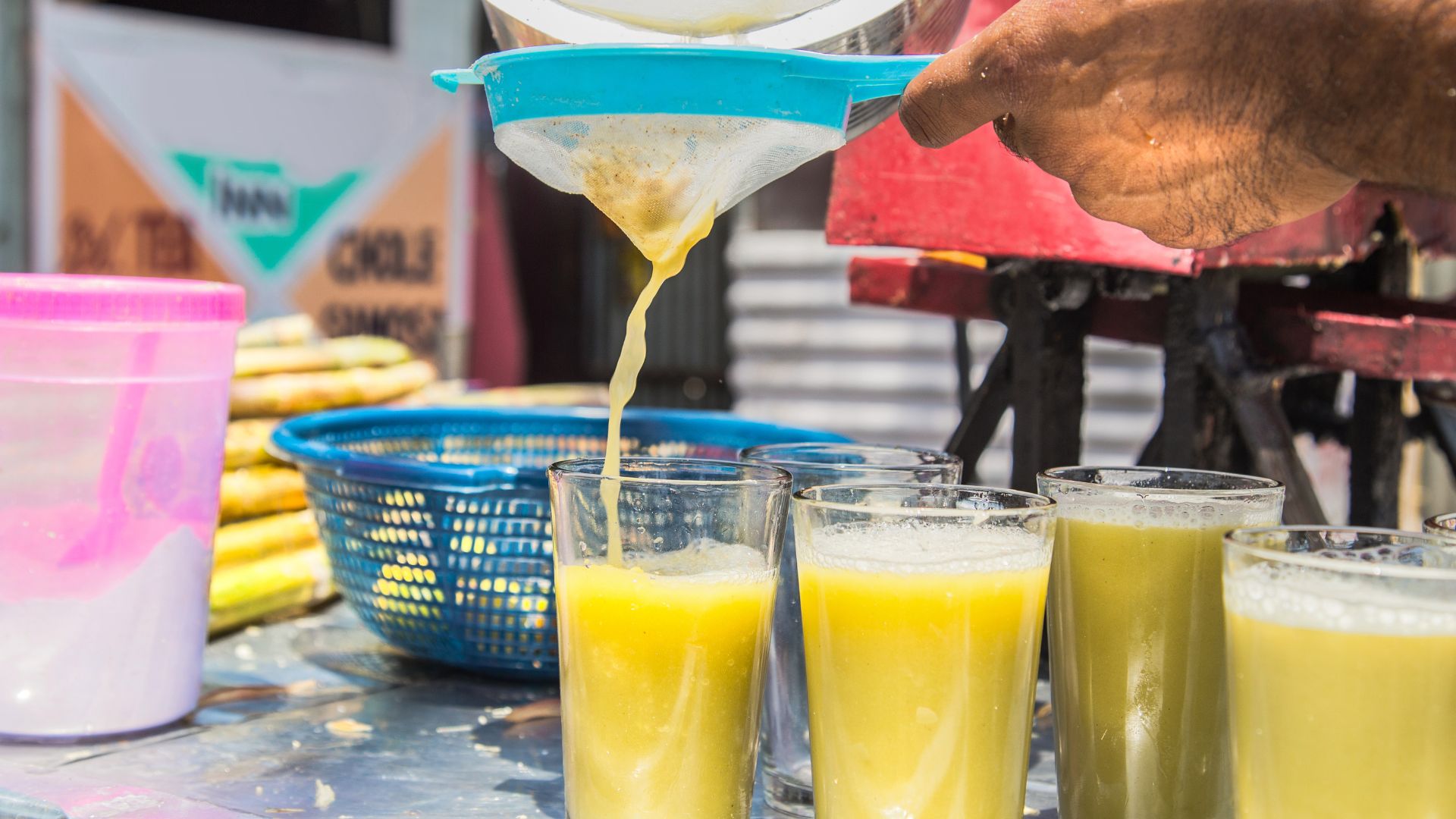
Understanding Rio’s Food Culture
Rio’s cuisine is a beautiful collision of Portuguese techniques, African ingredients, and indigenous traditions – all served with that distinctive Carioca flair. The locals here don’t just eat to live; they live to eat, and that enthusiasm is contagious.
What I love most about Rio’s food scene is how it reflects the city’s social spirit. Eating here isn’t just about the food – it’s about the experience, the conversations, and the connections formed over a cold beer and a plate of something delicious. The diversity of Rio’s cuisine mirrors the city itself: lively, vibrant, and ever-changing, but with deep roots in tradition.
Must-Try Rio de Janeiro Traditional Dishes
Feijoada
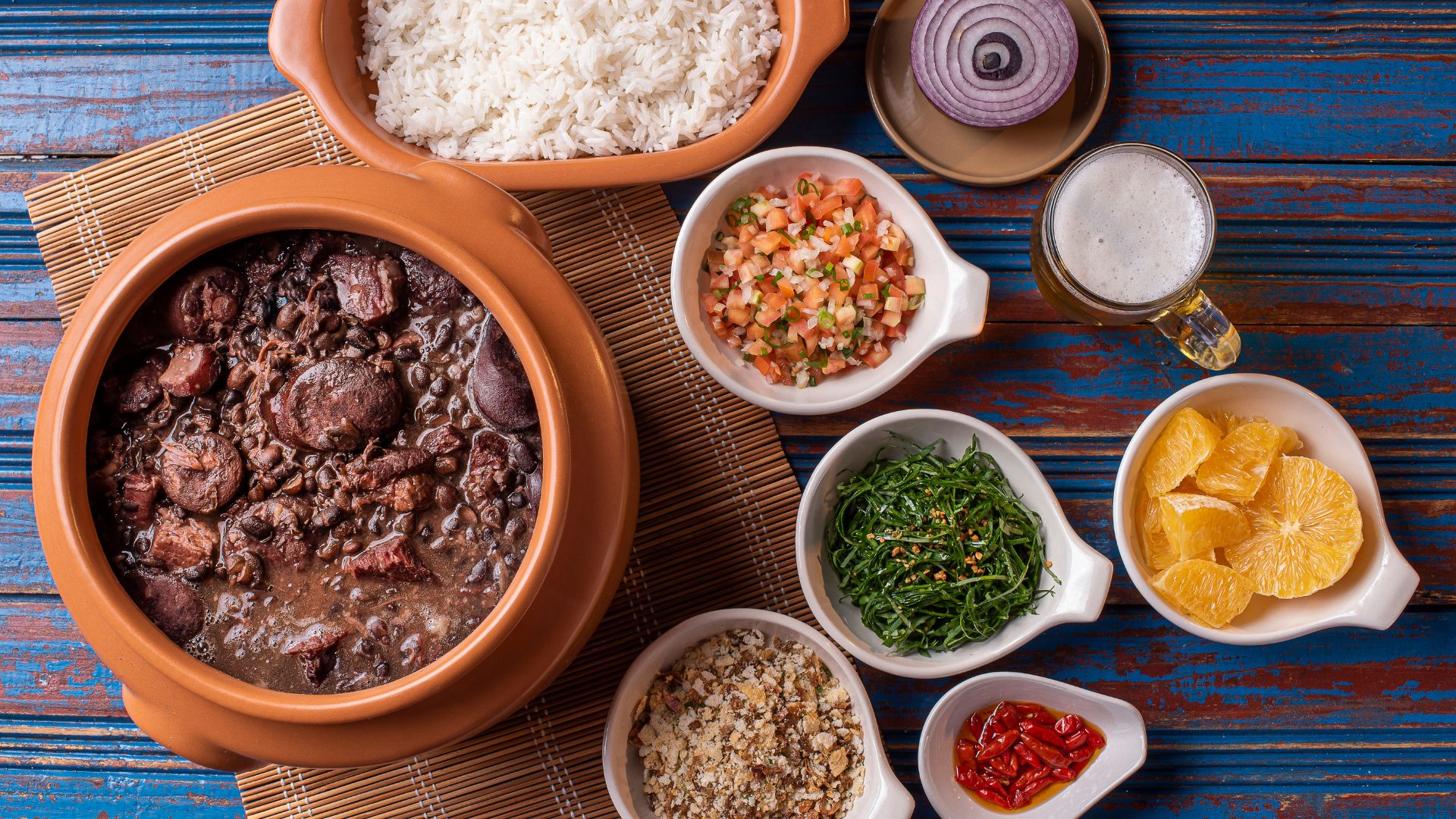
The undisputed heavyweight champion of Brazilian cuisine. This hearty black bean stew loaded with various cuts of pork is traditionally served with rice, collard greens, farofa (toasted cassava flour), and orange slices. It’s Brazil on a plate.
Feijoada is often said to have roots in the African slave population, who would cook with available scraps of meat—ears, tails, feet—which evolved into the beloved dish we know today. The meal was traditionally cooked in large communal pots and shared among the whole community.
However, many historians argue that feijoada has stronger roots in Portuguese cuisine, pointing out that it closely resembles traditional European stews made with beans and various meats. While enslaved Africans undoubtedly shaped Brazilian culinary traditions, the direct link between feijoada and slavery remains a topic of debate among food historians.
Top tip: Most restaurants serve feijoada only on Wednesdays and Saturdays. Plan accordingly if you’re desperate to try the real deal.
Churrasco
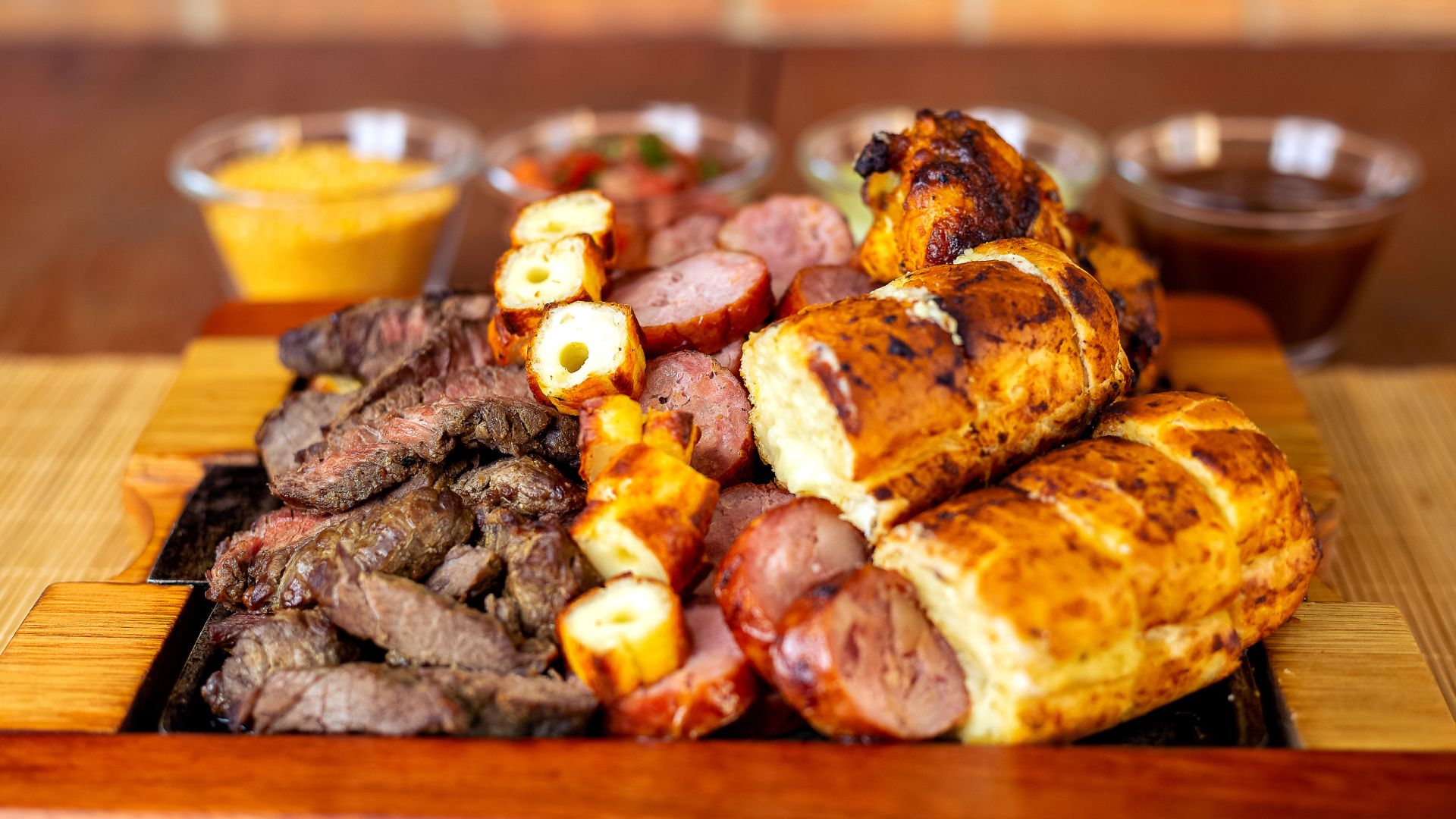
Brazilian barbecue isn’t just food – it’s practically a religion. The simplicity is what makes it special: quality cuts of meat seasoned with nothing more than rock salt, then grilled over open flames. The result is smoky, juicy perfection typically served with sides like farofa and vinaigrette.
The tradition of churrasco dates back to Brazil’s gaucho (cowboy) culture from the southern part of the country, where large cuts of meat were prepared over open fires, a practice that continues today.
If you want the full experience, head to a Brazilian steakhouse, known as a churrascaria. These all-you-can-eat restaurants serve endless cuts of meat tableside, sliced straight from the skewer by roaming waiters called passadores. Top picks often include picanha (rump cap), linguiça (sausage), and costela (beef ribs).
Bear in mind that portions are generous, so consider sharing if you’re planning to sample multiple dishes.
Baião de Dois
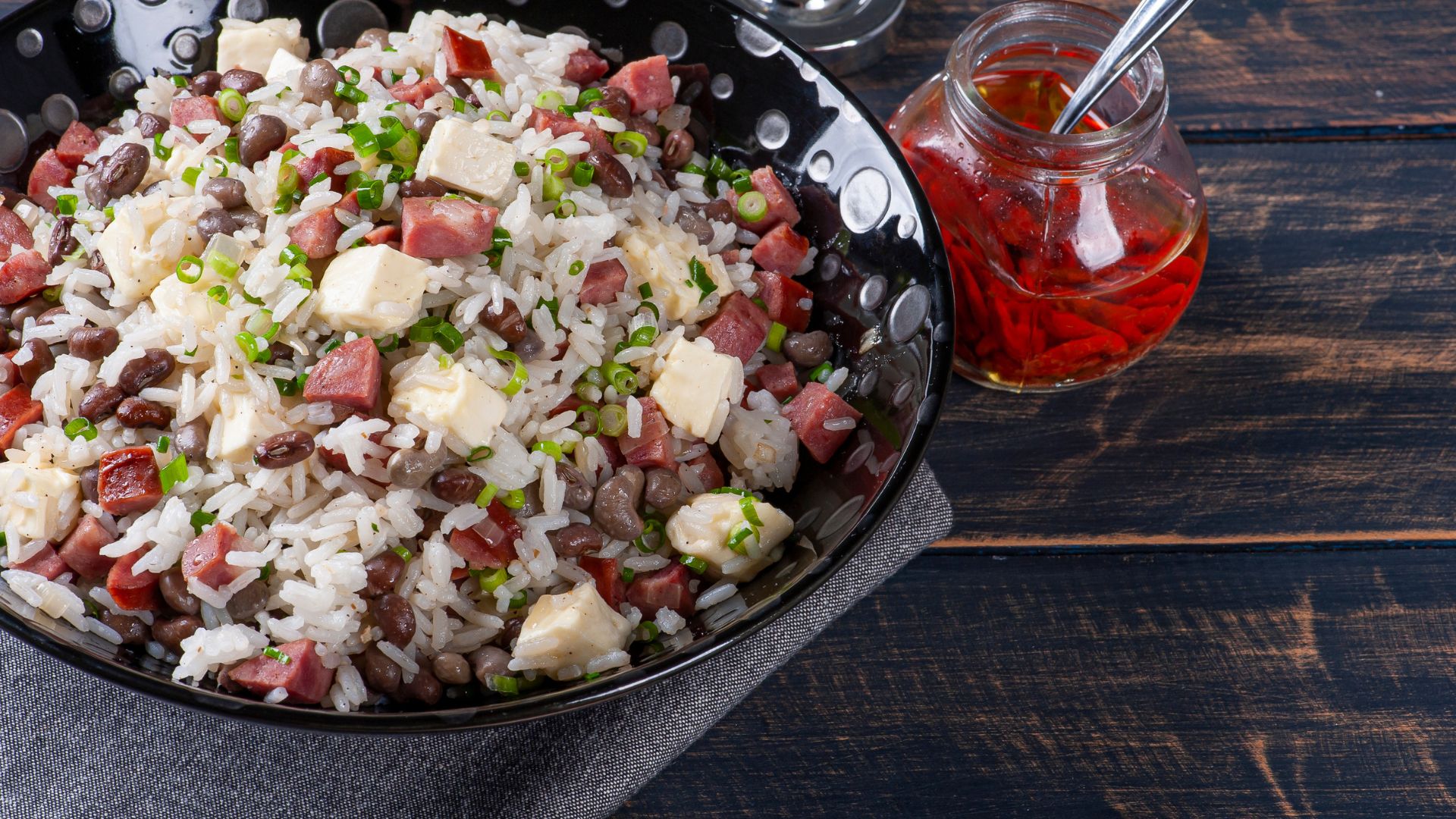
This flavorful combination of rice and black-eyed peas cooked with sausage, bacon, and cheese originates from Northeastern Brazilian cuisine but has found a happy home in Rio. It’s comfort food at its finest, combining the hearty flavors of the Northeast with Rio’s laid-back coastal spirit.
That said, it’s worth noting that baião de dois is much more closely associated with the Northeast than with Rio de Janeiro. While you can find it in some restaurants and Northeastern food spots around the city, it’s not as deeply rooted in Rio’s traditional food culture as dishes like feijoada or churrasco.
Street Food Treasures
The street food scene in Rio is where you’ll find some of the city’s most delicious bites. Forget fancy restaurants for a moment – these humble snacks offer an authentic taste of everyday Carioca life.
Pastel
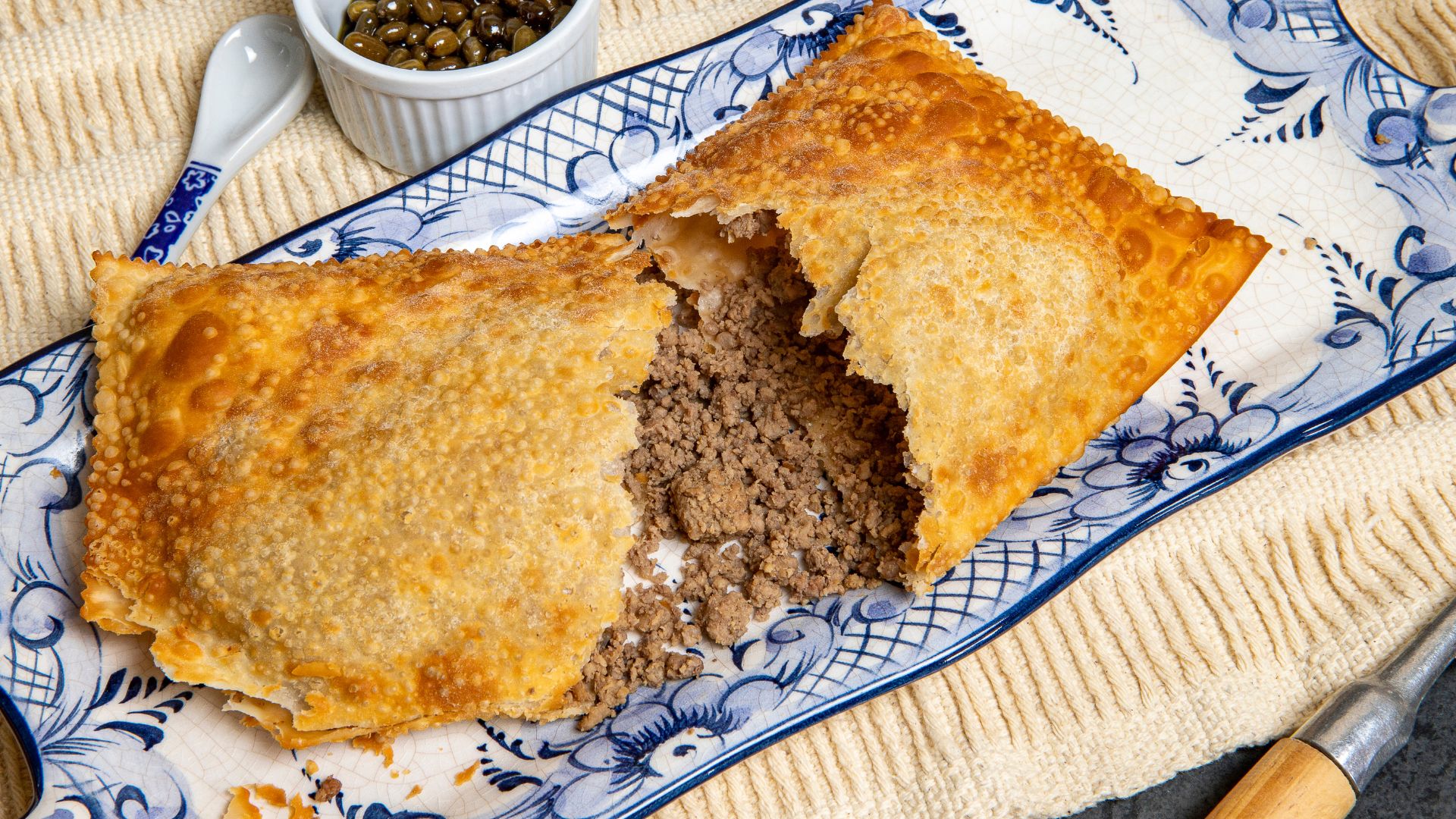
These crispy, fried pastry pockets filled with cheese, meat, or shrimp are utterly addictive. The secret to a perfect pastel? Those little blisters on the pastry that keep it light and airy. They’re sold at markets and street stalls across the city.
What I love most about pastels is enjoying them with a cold sugar cane juice on the side – the combination of savory and sweet is unbeatable.
Pastels are most commonly linked to Japanese immigrants in São Paulo in the 20th century, who adapted Chinese fried dumplings into the Brazilian pastel format. Over time, they evolved into one of the country’s most iconic street foods.
Coxinha

Shaped like a chicken drumstick, these deep-fried croquettes filled with shredded chicken and creamy catupiry cheese are the ultimate comfort food. The best ones have a crispy exterior giving way to a creamy, warm center. They’re commonly served with a dash of hot sauce for an extra kick.
Pão de Queijo
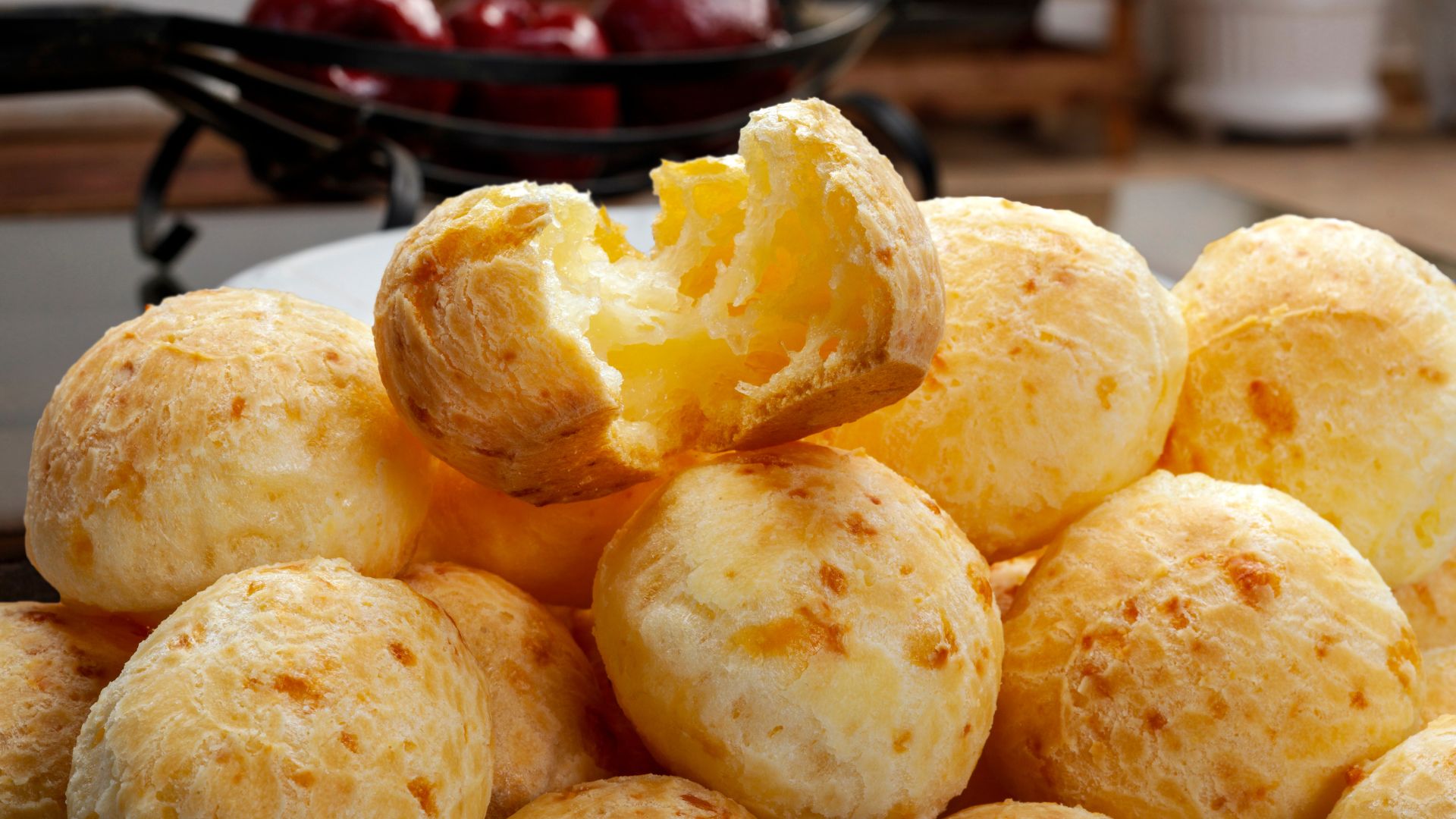
These chewy cheese bread balls made from tapioca flour are gluten-free and dangerously moreish. Crispy on the outside, soft and cheesy on the inside – they’re perfect for breakfast or as an anytime snack. They’re widely available, from corner bakeries to upscale cafés.
Pão de queijo originates from the state of Minas Gerais and is a proud staple of its regional cuisine. That said, it’s widely enjoyed in Rio and across Brazil, where it’s become a beloved go-to snack for all occasions.
Biscoito Globo
These light, airy, ring-shaped biscuits are a beach staple in Rio. Available in both sweet and salty versions, they’re practically mandatory when lounging on Copacabana or Ipanema. They pair perfectly with coconut water or mate tea purchased from beach vendors.
Top tip: While they might seem plain at first bite, these crunchy treats are strangely addictive and somehow taste better when eaten with sandy fingers and a view of the Atlantic.
Sweet Temptations
Once you’ve had your fill of savory bites, don’t forget to explore Rio’s sweeter side.
Brigadeiro

These chocolate truffles made from condensed milk, cocoa powder, butter, and chocolate sprinkles are a national treasure. They’re a fixture at Brazilian celebrations, but you’ll find them in cafés and bakeries throughout the city.
Quindim
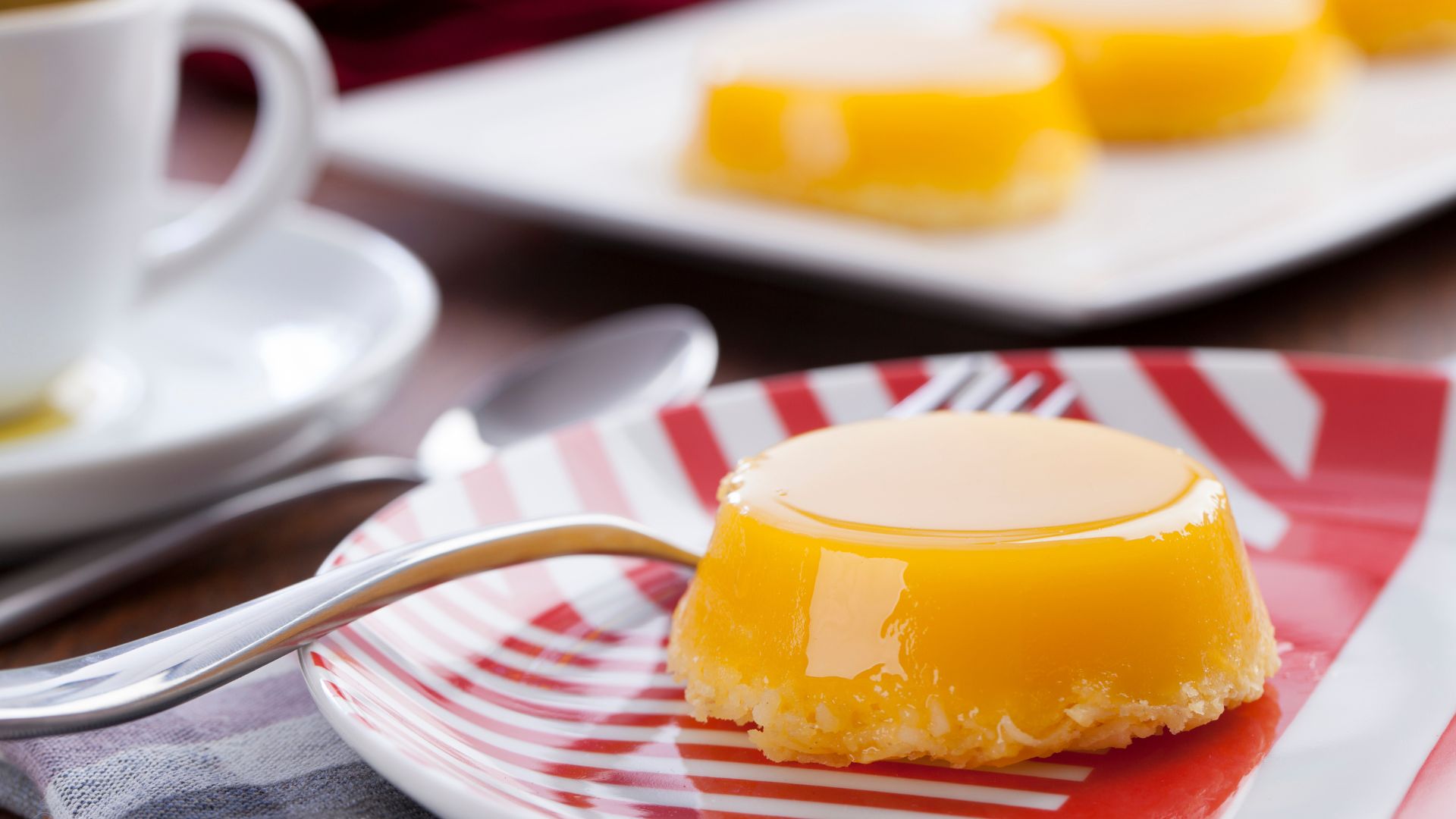
This bright yellow custard dessert made with egg yolks, sugar, and coconut has a glossy surface and tropical flavor that’s distinctively Brazilian. The contrast between the caramelized exterior and custardy interior is divine.
Açaí

While açaí bowls have become trendy worldwide, nothing compares to enjoying the real thing in Rio. The pure, unsweetened version is extremely bitter, so it’s typically served sweetened and topped with granola and fruit. It’s refreshing, nutritious, and perfect for hot days.
Where to Eat: From Botecos to Fine Dining
Botecos (Local Bars)
These casual establishments are the beating heart of Rio’s food culture. They’re where locals gather to enjoy cold beer, conversation, and simple but delicious food.
Pavão Azul
This beloved bar in Copacabana is famous for its variety of fritters, especially the bolinho de bacalhau (codfish fritters). The atmosphere is lively, and the beer is ice cold – exactly what you want after a day at the beach.
Bar do Momo
A local institution known for its diverse menu of traditional Brazilian snacks. Their portions are generous, and the food pairs perfectly with an ice-cold chopp (draft beer).
Bar da Gávea
Renowned for traditional Brazilian dishes, especially grilled meats. The atmosphere is authentically local, and the food is reliably delicious.
Galeto Sat’s
This spot is renowned for its perfectly grilled chicken and variety of traditional side dishes. It’s not fancy, but the food is exceptional.
Street Food Hotspots
When it comes to finding the best street food in Rio, it’s all about knowing where the locals go. Skip the tourist traps and head to these authentic spots where you’ll find the freshest, most flavorful snacks in the city.
Ipanema Hippie Fair
This market is a treasure trove of street food, including some of the best pastels in the city. The combination of crispy pastels and freshly squeezed sugar cane juice is a classic Rio experience.
Copacabana Beach Vendors
The beach vendors along Copacabana offer everything from fresh coconut water to grilled cheese on sticks. Look for vendors with a steady stream of local customers – that’s how you know the food is good.
Top tip: Vendors selling Biscoito Globo, mate tea, and fresh coconut water are part of the essential Rio beach experience. Don’t miss out!
Fine Dining Experiences
While Rio is famous for its casual eating culture, the city also boasts some impressive fine dining options that showcase Brazilian ingredients in innovative ways.
Braseiro da Gávea
Known for outstanding barbecue, including cuts like maminha and picanha. The lively atmosphere makes for a memorable dining experience.
If you’re looking for a more upscale experience, head to Oro – a Michelin-starred restaurant where chef Felipe Bronze reimagines Brazilian flavors with a modern twist. The tasting menu is an adventure in itself, showcasing local ingredients in creative, unexpected ways.
Drinking Like a Carioca
No food guide to Rio would be complete without mentioning what to drink alongside all these delicious eats.
Caipirinha

Brazil’s national cocktail made with cachaça (sugarcane spirit), lime, and sugar. Refreshing, potent, and dangerously easy to drink, especially on hot days. The best ones use quality cachaça and fresh limes – avoid the pre-mixed stuff.
Bear in mind that they’re stronger than they taste! Pace yourself, especially if you’re enjoying them under the hot Rio sun.
Guaraná

This popular Brazilian soft drink, inspired by the guaraná fruit—a berry native to the Amazon, has a sweet, slightly tangy flavor that’s difficult to describe but utterly refreshing. While most commercial versions aren’t made from the actual fruit, the flavor captures its unique essence. It’s perfect when you need a non-alcoholic option, especially on a hot Rio day.
Mate Tea
This cold, sweetened tea made from yerba mate leaves is sold by beach vendors throughout Rio. Vendors walking along the sand shouting “Mate gelado!” are part of the authentic beach experience.
Brazilian Coffee

Brazil is one of the world’s largest coffee producers, and the coffee in Rio doesn’t disappoint. From strong espresso to creamy, ice cream-like versions — and even smooth filtered coffee, often served in a glass — coffee culture is an essential part of the daily routine here.
Practical Food Tips for Visitors
I learned most of these tips the hard way – like the time I confidently ordered feijoada on a Monday and got nothing but confused looks, or when I nearly fainted after my third caipirinha on Ipanema Beach (those things are stronger than they seem!). Let me save you from my mistakes with some practical advice:
Navigating Meal Times
Cariocas typically eat later than many visitors might be used to. Lunch is usually between 12–2pm, while dinner rarely starts before 8pm and often much later on weekends.
Tipping Practices
A 10% service charge (the “couvert” or service fee) is typically added to your bill at restaurants. While not mandatory, it’s customary to pay it. For exceptional service, you can always leave a bit extra directly to the staff.
Portion Sizes
Brazilian portions tend to be generous. If you’re trying multiple dishes, consider sharing to avoid food waste and over-indulgence.
Street Food Safety
While street food is a delightful part of Rio’s culture, it’s wise to exercise some caution. Buy from vendors with a steady local clientele, as this usually indicates both quality and safety. Additionally, it’s a good idea to observe hygiene practices at street stalls to ensure you’re eating food that’s been prepared properly.
Best Times for Specific Food Experiences
Breakfast the Brazilian Way
Start your day like a local with pão de queijo, pão com ovo, pão na chapa ou misto-quente, fresh tropical fruits, and strong Brazilian coffee. Most bakeries and cafés open early and offer these morning staples.
Weekend Feijoada
Saturday is traditionally feijoada day in Rio. Many restaurants offer special feijoada service on weekends, making it the perfect time to experience this national dish in all its glory.
Late-Night Eats
After dancing the night away, follow the locals to 24-hour juice bars or street stalls slinging Podrão—those gloriously greasy, oversized burgers stacked with everything from eggs to potato sticks.
Other late-night favorites include hot dogs loaded with mashed potatoes, corn, and all the fixings, or a refreshing açaí bowl to cool off and recharge. These post-party snacks are a fun way to cap off your night and soak up the city’s vibrant street food scene.
The Bottom Line
Rio’s food scene is as dynamic and diverse as the city itself. From sophisticated restaurants to humble street carts, the common thread is a passion for bold flavors and fresh ingredients that reflect Brazil’s multicultural heritage.
The good news is that eating well in Rio doesn’t have to be expensive. Some of the most memorable meals you’ll have might be a simple pastel from a market stall or feijoada shared with new friends at a neighborhood botequim.
So venture beyond the tourist zones, point bravely at menu items you can’t pronounce, and prepare for a culinary adventure that’s every bit as exciting as Rio’s famous beaches and landmarks.
Bom appetite!